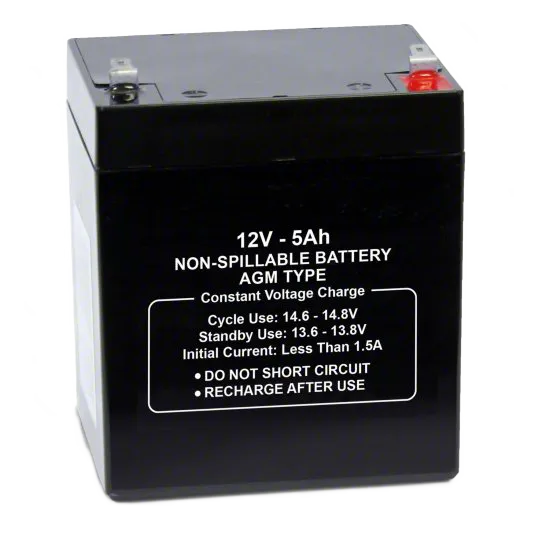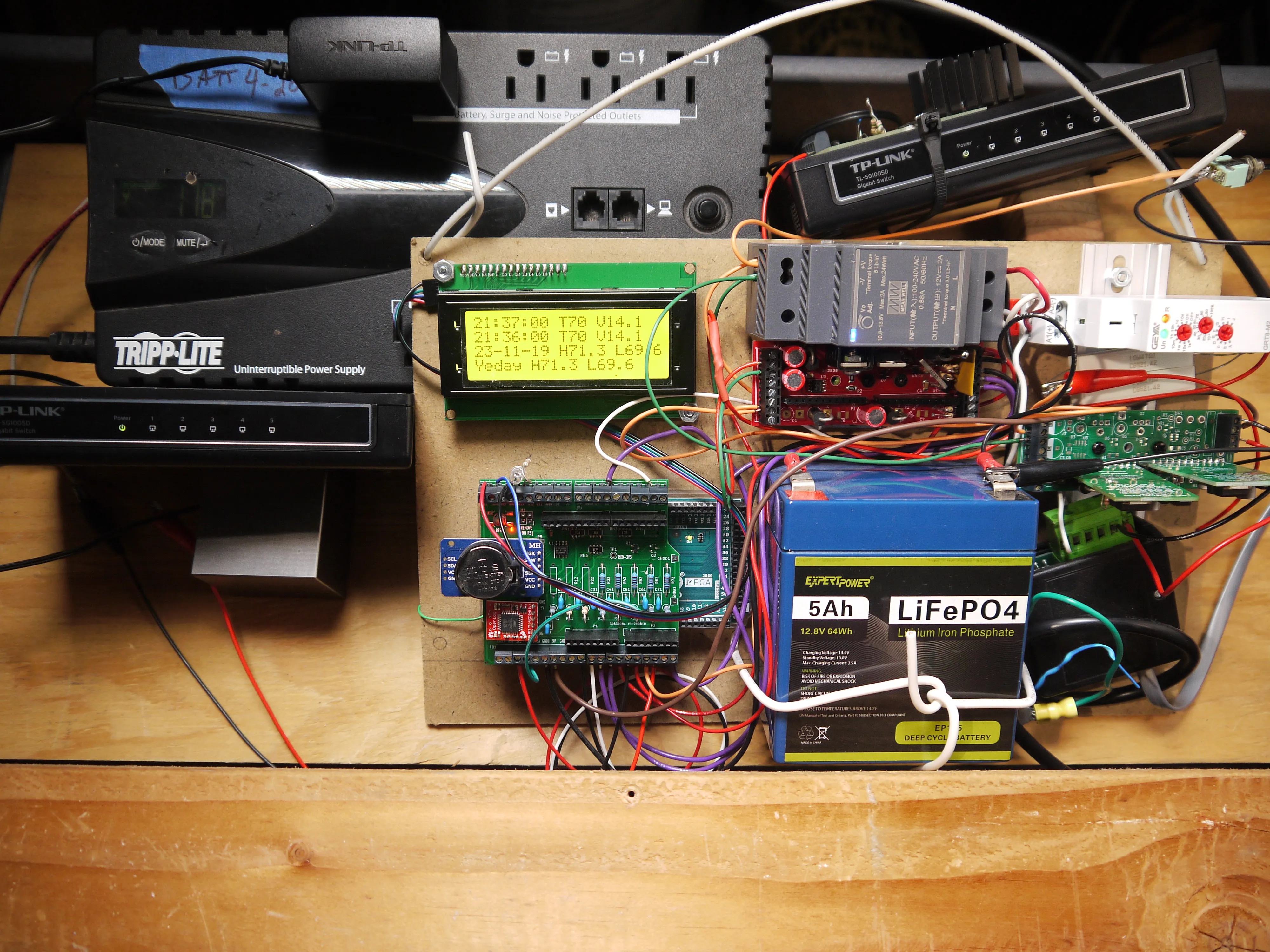Out of this
world battery
run time.
world battery
run time.


NanoUPS is a compact DC Uninterruptible Power Supply compatible with LiFePO4 and Lead Acid batteries.
NanoUPS fits in the slot of space between a small DIN rail power supply and a 5Ah battery in a NEMA enclosure.
Battery Control and Charging
Switches to battery backup on power failure, and the built-in charge controller recharges the battery upon power restoration.
Alternate Power Source
NanoUPS has an alternate power input that bypasses the charge controller, but is still monitored by the current sensor so solar, wind, etc. power sources can be used to extend or replace main power.
Plug-In Power Modules
NanoUPS can accept 2 P783F-Q24 DC DC converters so different DC loads can be accommodated. The enable signals are exposed on the screw cage connectors, so loads can be remotely shut down if needed.
Extended Battery Runtime
The combination of a LiFePO4 battery, which have a deeper allowable discharge range, and direct DC power to the loads, which dramatically reduces the losses between the battery and the load, results in much longer runtimes compared to AC / SLA UPSs.
Visibility Enabled
The battery current and voltage is exposed on the screw cage connectors, making is possible to monitor and record the state of the battery over time.
No Lonely Components
A top priority when designing the NanoUPS circuit board is multi-sourcing components. When single-source components go out of stock or production, building new, or repairing existing, units becomes difficult or impossible.
Checkout the NanoUPS schematic, drawdown and recharge test data and plugin examples below.
NanoUPS attaches to a DIN clip. Making it easy to mount next to a DIN power supply in a NEMA enclosure.
A showdown of the NanoUPS power controller vs the Tripp-Lite ECO650LCD UPS each powering a TP-Link TL-SG1005D switch. Tripp-Lite ECO650LCD ran on battery for 9.75 hours (impressive). NanoUPS ran on battery for 82.6 hours (impressive!). NanoUPS ran much longer due to the longer lifespan of a LiFePO4 battery and the lower current draw due to not converting up to 120VAC and back down (in device power supply).
Showdown done with a simple data logging system built around an Arduino Mega and a GenuLog Shield that adds a RTC to timestamp readings and RRC networks on the analog inputs to scale and filter the signals. The TP-Link TL-SG1005D switch on the left is powered by the Tripp-Lite ECO650LCD UPS and the switch on the right is powered by the NanoUPS 12V output being sent to a LM317 programmed to reduce the voltage to the 9V needed by the switch. The NanoUPS is the red board above the ExpertPower® EP125 LiFePO4 battery. The green boards to the right of the NanoUPS are 8V and 5V regulators to power the Arduino and a RS-232 converter that sends the data to a PC to record the data. The Arduino is running the data logging sketch and the PC is running the Python serial data processor and saves the data in CSV formatted files to be processed in a Jupyter Notebook for data analysis and visualization. Github renders Jupyter Notebooks natively so you can view the results without installing Jupyter at NanoUPS vs ECO650LCD. Scroll to the bottom to see the graph showing the battery discharge / recharge cycle.

NanoUPS sounds too good to be true, is it real or a dream? Yes and yes.
If you have gotten this far, you might thinking DC UPSs are great, where do I buy one? Or the thought this must be a scam, if it was real, all the big companies would be making DC UPS. The reality is somewhere in the middle. First off, the designs, electronics in the pictures and test results are all real. Also, there are big companies making DC UPSs. One of the biggest names in UPSs, APC has a small one, search for APC CP12142LI. There are also large units for data centers. If they already exist, why did you design one? 2 reasons: none that I could find had the features or form factor I was looking for, and I thought it would be a good project to dust off some skills I had not used in some time, and learn some new ones. A challenge of DC UPSs is the output voltage and connector must be tailored to the device being powered. Therefore I wanted a plugin design that facilitated matching a linear or switch mode power module to the load. Also, I often use NEMA boxes with an 8" inside dimension so I wanted the power / charge controller to fit in space between a 2A DIN power supply and a 5AH lead acid or LiFePO4 battery.
As the pictures and test results show, I am confident I have meet my major goals and I have hand made a number of units for my use. I am evaluating the prospect of making some units for purchase. This could take many forms, everything from just selling the bare circuit board, to building up completely assembled and tested units. The most likely offering will be circuit boards with the surface mount components, and maybe the through hole components, populated and some instructions on how to build up the rest of the system to work in the desired application. As I get units ready for sale (main controller board, plugin modules, monitoring extensions, etc.) the items will be posted to my Tindie store.
Why the web site for a product still taking form? One of the technologies I wanted to learn was the Astro web framework. There is no substitute to building something when learning a new technology. While I am far from an Astro expert, building this site has been a great introduction to working with Astro.
Some of the skills / tools used and learned while designing and testing NanoUPS:
And in the future I am considering having NanoUPS push status data to a NodeJS web service running in AWS to remotely monitor the status of the UPS. Also I may evaluate if a higher power version is needed to run devices that require more power and larger batteries to have an extended run time. But none of this happens overnight as these projects get done as I can steal a half hour here and and hour there on nights and weekends. I do have a full time job and young kids to consume most my waking hours. If you are wondering who decided it was a good idea to design a UPS as a form of entertainment, my name is Walter Spurgiasz.